Travel
How does it feel to surfing alaska?
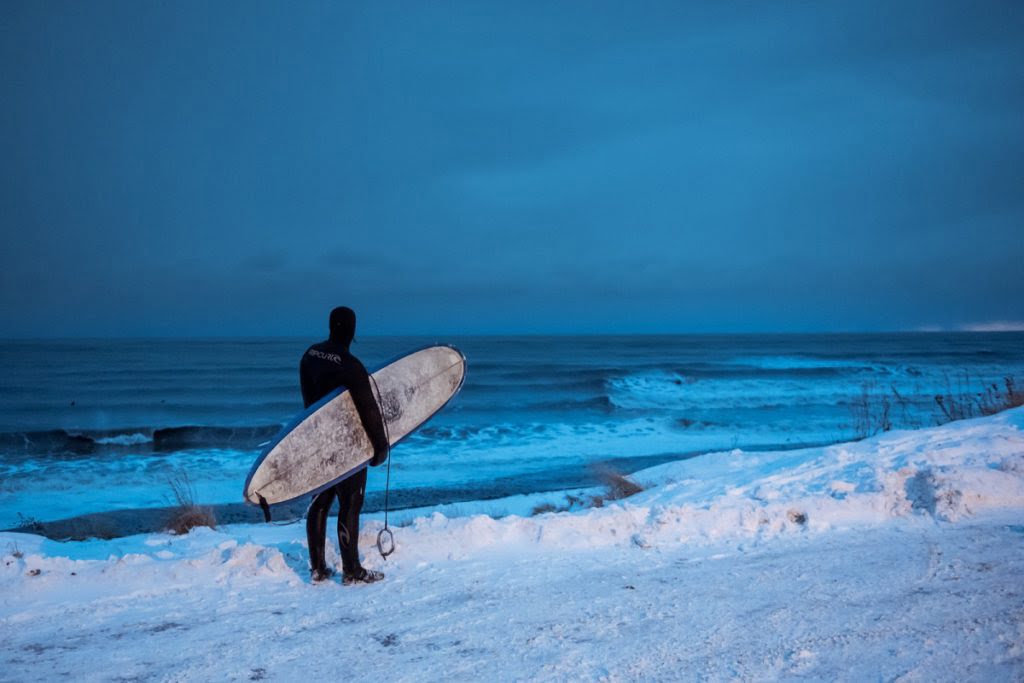
Table of Contents
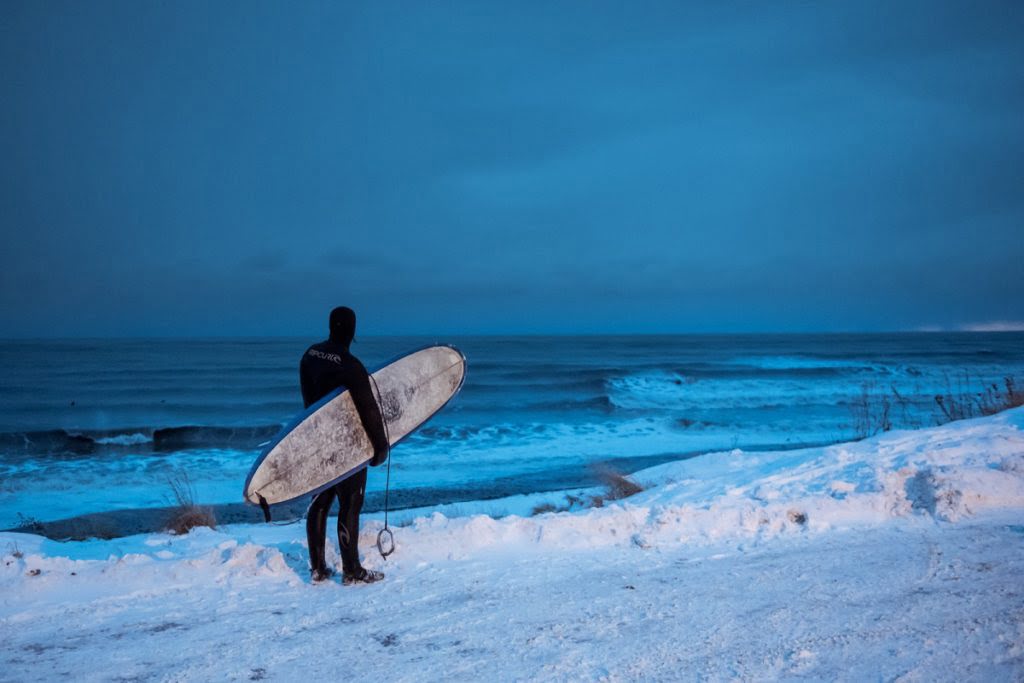
The surfing world’s attention is currently centered on Hawaii, yet few people consider the location that creates the swell that goes southward to the islands. Alaska has more coastline than the 48 contiguous states of the United States combined, and the storms that brew off that huge coastline are among the most powerful in the world. Scott Dickerson, an Alaskan photographer, and filmmaker have just published a teaser for his upcoming video series “Surf Alaska.” We spoke with Scott to get a feel of what it’s like to surf in such a harsh, punishing environment. Alaska appears to have a lot to offer individuals who enjoy travel and adventure. And the surf looks pretty damn fun, too.
Are you a native of Alaska? How did you start surfing in that location?
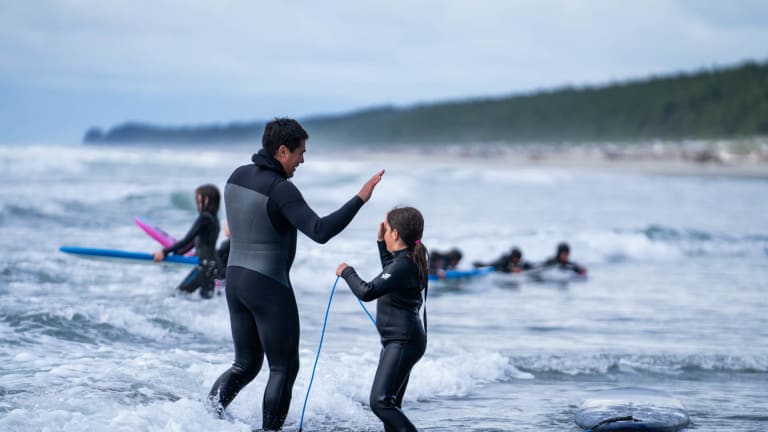
I grew raised in Alaska, and it’s still a surprise to me how I became so obsessed with surfing. I had never seen someone surfing in our hometown until a friend and I started bodysurfing in the sloppy small waves that struck the beaches. To tell you the truth, I had no idea how surfing worked. I knew it was enjoyable to be in the water, and it was even more enjoyable when there were waves! It’s been a long, cold, and slow journey to get here, but it’s been enjoying every step of the way. The spectacular excursions involving boats, aircraft, and helicopters, as well as the degree of technology we use to remain warm while surfing, were once only dreams.
What distinguishes surfing in Alaska from surfing in other parts of the world?

It goes without saying that Alaska is in a league of its own when it comes to breathtaking beauty and harsh weather. The full adventure and nature experience are frequently more important than the actual wave riding on these surf vacations. Aside from those two factors, what makes surfing in Alaska unique? The most significant distinction is that, despite the fact that surfing places all over the world are becoming more crowded, we still get to ride fantastic waves by ourselves. On a bright weekend, there may be ten surfers at the few easy-to-reach sites, but most of the time, it’s just a couple of buddies surrounded by an unending wilderness cheering each other on.
How did you get started photographing and filming surfers in that area?
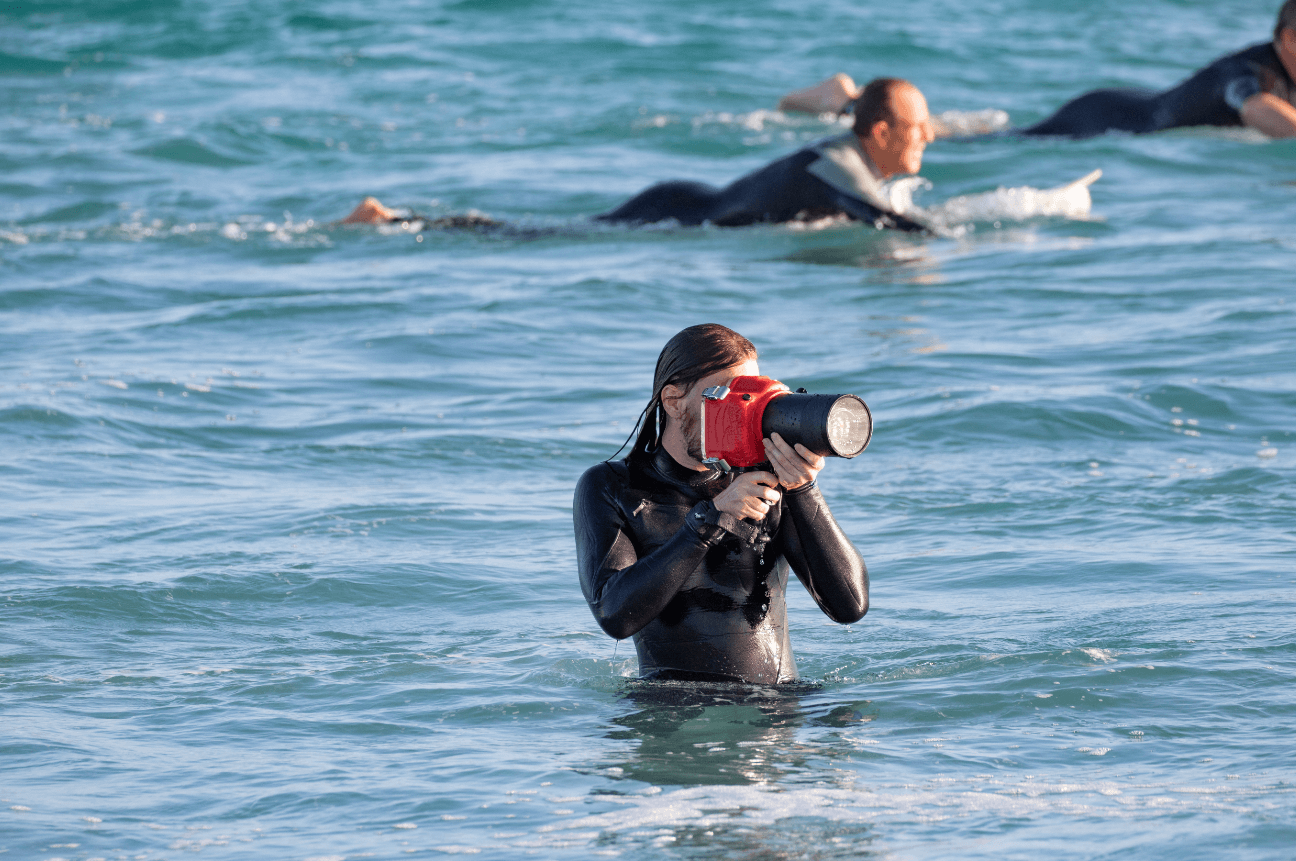
Photography and videography are my major professions, as well as two of my passions: surfing and flying. In 2008, I launched SurfAlaska.net, a website dedicated to sharing photographs, stories, and information about surfing in Alaska. It took me years to eventually have the correct gear and be able to anticipate waves here, and I wanted to assist others to avoid the years it took me to get there. I also wanted a location to put all of my surf images because I had too many. I’ve always loved capturing unusual themes in my photography, and surfing in Alaska certainly fits the bill. As camera technology improved, it became easier to capture video, in addition, to still images, so I’ve been saving footage from our surf trips for the past few years.
In Alaska, how do you get to the waves? What kinds of preparations and safeguards must you take?
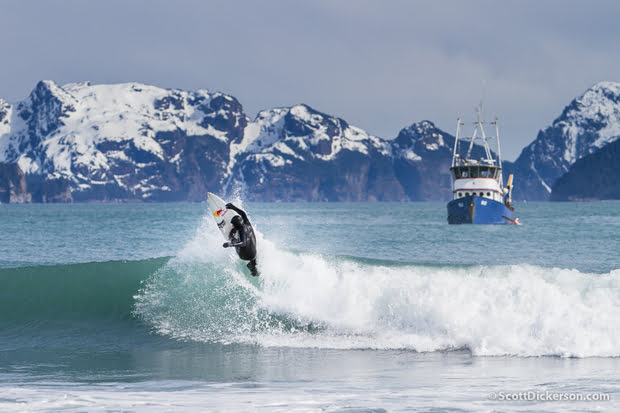
The most difficult aspect of surfing in Alaska is getting to the rough shoreline. We only have two alternatives if we don’t have access to roads: flying or sailing. The 58-foot motor vessel Milo has been our go-to gear for getting to the waves. It has its own set of pros and problems. We can be self-sufficient for weeks at sea with this seaworthy craft, and we’ve demonstrated several times that we can withstand the harsh conditions that come with surfing this far north.
Every journey I take, I analyze the worst-case situation and prepare accordingly. I’ve discovered that if you prepare for the worst, you’ll be able to survive and perhaps even appreciate much of what nature has to offer.
How much of the shore have you been able to see? What have you discovered to be the finest waves and set-ups?
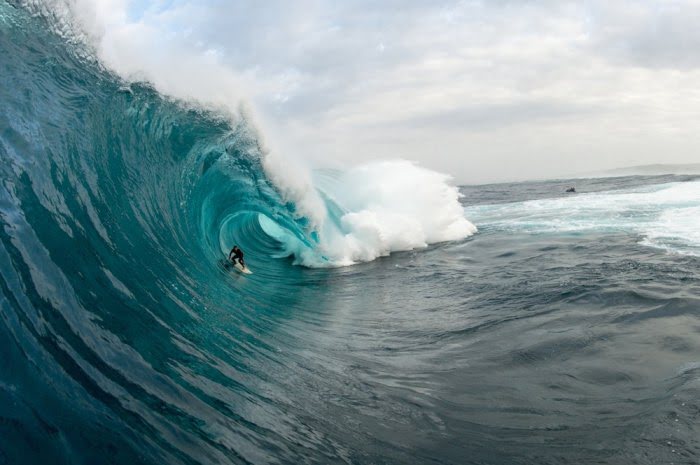
I’ve seen a lot of Alaska’s coastline from the air and from boats, but with such drastic tidal variations and constantly shifting swell heights and orientations, even at my home break, there’s always more to explore. We’ve surfed all the way from Southeast Alaska through the Gulf of Alaska to the Aleutian Islands’ beginnings aboard the m/v Milo, but we’re never done exploring. To put things in perspective, Alaska’s coastline exceeds that of the whole contiguous United States combined. We’ve ridden incredible waves in a variety of locations, but we’re constantly on the lookout for the next big thing.
Is it still possible to find beautiful waves in Alaska that have never been surfed?
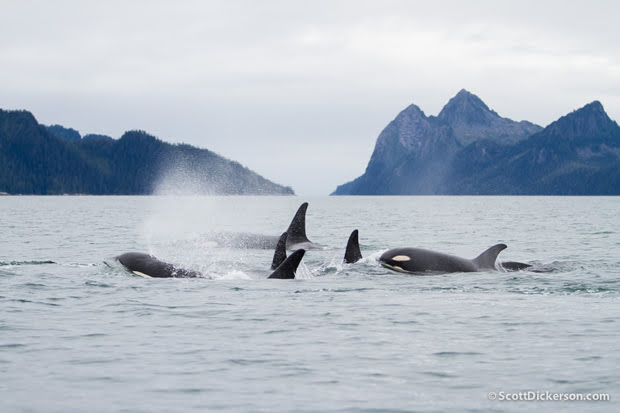
Yes, there are a lot of them.
What’s the craziest thing you’ve ever done on a surf trip?
Winter boating in Alaska is typically not recommended. Especially not when a large storm is coming, which is exactly when we usually go out. I’ve had a couple of moments where I’ve questioned if we’re taking this surf pioneering thing too seriously. I’m not really trying to remember those moments since we’re departing in the middle of the night tonight on our next adventure, hoping to get to a secure anchorage before a huge storm strikes so we can surf the accompanying waves once the wind has died down. We’re estimating how far we can travel before we have to hunker down because the forecast contains a lot of heavy, freezing spray warnings.
How is the surfing scene there? What kind of surfers are there, and how devoted are they?
In Alaska, there are just a few people who I would consider committed surfers. Many more may surf a few times a year when the weather permits and it is not too chilly. Surfing is not compatible with a day job in this location. Because the tide and weather are continually changing so quickly, you pretty much have to be able to drop whatever you’re doing go surf when the conditions allow.
How did the web series come to be, and when will the episodes be released?
For several years, the “Surf Alaska” video series has been in the works. Exploring Alaska’s shoreline is a once-in-a-lifetime opportunity that only a select few will ever have. Photography is a fantastic tool for capturing some of life’s most memorable events, but it’s difficult to express the entire narrative in still photographs. I’d want to offer folks a taste of what it’s like to go wave hunting in the far north. The narrative of adjusting to nature’s whims as we hunt for that elusive and ecstatic moment of riding a wave is highly interesting. Many reality TV production companies have approached me about making a program about our surfing exploits, but they all want to follow the same boring and ugly plot of interpersonal conflict and over-hyping actual or imagined hazards and risks. Because I’m sure I’m not the only one who can’t stomach that type of nonsense, I decided to do it myself. We’re going to keep things genuine with the “Surf Alaska” film series and let nature generate the drama. The shows are on a somewhat tight timetable. Depending on the weather, I believe we’ll be able to create an episode every three to six weeks. Each episode will usually revolve around a surfing trip. So far, I haven’t had much luck planning the surf ahead of time.
Travel
www.goodmooddotcom.com Luxury Category: Your Gateway to Upscale Living

Table of Contents
GoodMoodDotCom is a website designed to inspire and inform its audience about the best of luxury living. One of the standout features of the website is the www.goodmooddotcom.com luxury category, a space dedicated to everything related to high-end travel, exquisite destinations, and exclusive experiences. If you are looking for inspiration or practical advice on how to enjoy the finer things in life, this category is your go-to guide.
What is the Luxury Category?
The Luxury category on GoodMoodDotCom is a section designed to showcase the most lavish experiences from around the world. From luxurious hotels and exotic destinations to once-in-a-lifetime experiences, this category has it all. The purpose of this section is to offer its readers a detailed, inspiring glimpse into what the world’s elite enjoy, from extravagant vacations to refined lifestyle choices.
Here, readers can find articles that highlight luxurious destinations, accommodations, and curated experiences that cater to those who appreciate the finer things in life. Whether you’re looking for dream vacation ideas or just want to escape into a world of opulence, the Luxury category offers a wealth of material to get lost in.
Key Highlights of the Luxury Category
Luxury Travel Destinations
The Luxury category offers a detailed look at some of the most sought-after destinations. For example, readers can explore places like Tulum, Mexico, known for its pristine beaches and exclusive resorts. Articles often cover these locations in depth, highlighting what makes them unique—be it the beaches, culture, or privacy offered at high-end resorts.
Additionally, the site explores other luxurious destinations, such as Australia, where luxury travel options range from private villas to world-class dining and activities. This section presents these places not just as travel spots, but as full experiences waiting to be discovered.
Luxury Accommodations
What’s a luxury vacation without a stay in one of the world’s most exclusive hotels or resorts? The Luxury category features comprehensive reviews and guides on five-star hotels, boutique stays, and extravagant villas. These articles emphasize the lavish amenities provided, from personal butlers and private pools to exquisite spas and fine dining experiences.
Whether it’s a private villa in the Maldives or a historic palace hotel in Europe, GoodMoodDotCom offers an inside look at where to stay for the most comfortable, luxurious experiences.
Exclusive Experiences
It’s not just about the destination or the place you sleep—it’s about the experiences you indulge in. The Luxury category also dives into the types of exclusive activities that are available for those who seek something extraordinary. Whether it’s cruising on a luxury liner across the Mediterranean or attending VIP events like art shows or fashion weeks, the site covers a range of luxury experiences designed to make your vacation unforgettable.
The category features not only popular luxurious activities but also highlights more unique options, like private tours or bespoke cultural experiences tailored to the traveler’s interests.
Audience for the Luxury Category
The Luxury category on GoodMoodDotCom caters primarily to affluent travelers, luxury enthusiasts, and anyone who dreams of experiencing a lavish lifestyle. Whether you’re planning your next getaway or simply exploring what’s possible in the world of luxury, the content is designed to inspire and inform.
However, it’s not just for those with a large budget. Even if you don’t have the means to enjoy every luxury listed, the category provides plenty of ideas for future goals or simply to indulge in daydreams about the possibilities.
Unique Features of GoodMoodDotCom’s Luxury Content
What makes the Luxury category stand out is its ability to mix detailed information with high-quality visuals and a personal touch. The content is not just about showcasing luxurious places—it’s about telling a story. Readers are taken on a journey, from the serenity of a luxury spa to the thrill of a private yacht cruise. Each article is crafted to immerse the reader in a world of elegance and sophistication.
Moreover, the site regularly updates its content, ensuring that you have access to the latest and greatest luxury destinations and experiences. Whether it’s a new luxury resort opening or a hot spot for elite travelers, GoodMoodDotCom keeps its readers up to date.
How to Use the Luxury Category?
Exploring the Luxury category is easy, and there are many ways to make the most of it. You can start by browsing through the various sections, such as the “Destinations,” “Hotels & Resorts,” and “Experiences” pages. Each section offers detailed insights into luxury options around the world.
If you’re planning a trip, you can use the content to help choose your next destination or select an upscale hotel that fits your needs. For those simply looking to dream, the site provides an endless source of beautiful imagery and captivating stories that transport you to the world’s most exclusive spots.
Why Choose GoodMoodDotCom for Luxury Content?
GoodMoodDotCom’s Luxury category stands out for its curated and trustworthy content. The articles are written by experienced travelers who provide insider insights that you can rely on. It’s not just about what looks good—it’s about what truly offers the best experiences.
The site also makes luxury more accessible by presenting detailed, engaging content that appeals to both high-budget travelers and those who enjoy dreaming about luxury experiences. It allows you to explore luxurious options and plan your own dream getaway, even if it’s just an aspiration for now.
Conclusion
The www.goodmooddotcom.com luxury category is more than just a section of the website—it’s an invitation to explore a world of opulence and indulgence. Whether you are planning a lavish vacation or simply looking to get lost in the beauty of high-end destinations, this category has everything you need to fuel your imagination. Take a journey through stunning hotels, serene beaches, and exclusive experiences that make the world of luxury travel truly unforgettable.
FAQs
What kind of destinations can I find in the Luxury category
You’ll find a variety of high-end destinations, including exotic beaches, private islands, and culturally rich cities that cater to luxury travelers.
Are the luxury accommodations reviewed on the site?
Yes, each featured luxury accommodation is carefully reviewed, highlighting key amenities, services, and exclusive experiences available for guests.
How often is the content in the Luxury category updated?
The Luxury category is regularly updated with new articles, ensuring fresh insights on trending destinations, accommodations, and activities.
Can I find budget-friendly luxury options on GoodMoodDotCom?
While the focus is on upscale experiences, there are occasionally more affordable luxury options or tips on enjoying opulence within a reasonable budget.
Is the Luxury category suitable for non-affluent travelers?
Absolutely! Even if you can’t afford all the featured experiences now, the content serves as great inspiration for future luxury travels.
Article Recommendations
11050208253XZ Filtro: A Comprehensive Guide
Understanding 810347200593: An Informative Guide
Does a 5.9 Valve Cover Fit n a 6.7: Modifications and Solutions Explained
Travel
Morocco Desert Tours: Exploring the Mystique of the Sahara
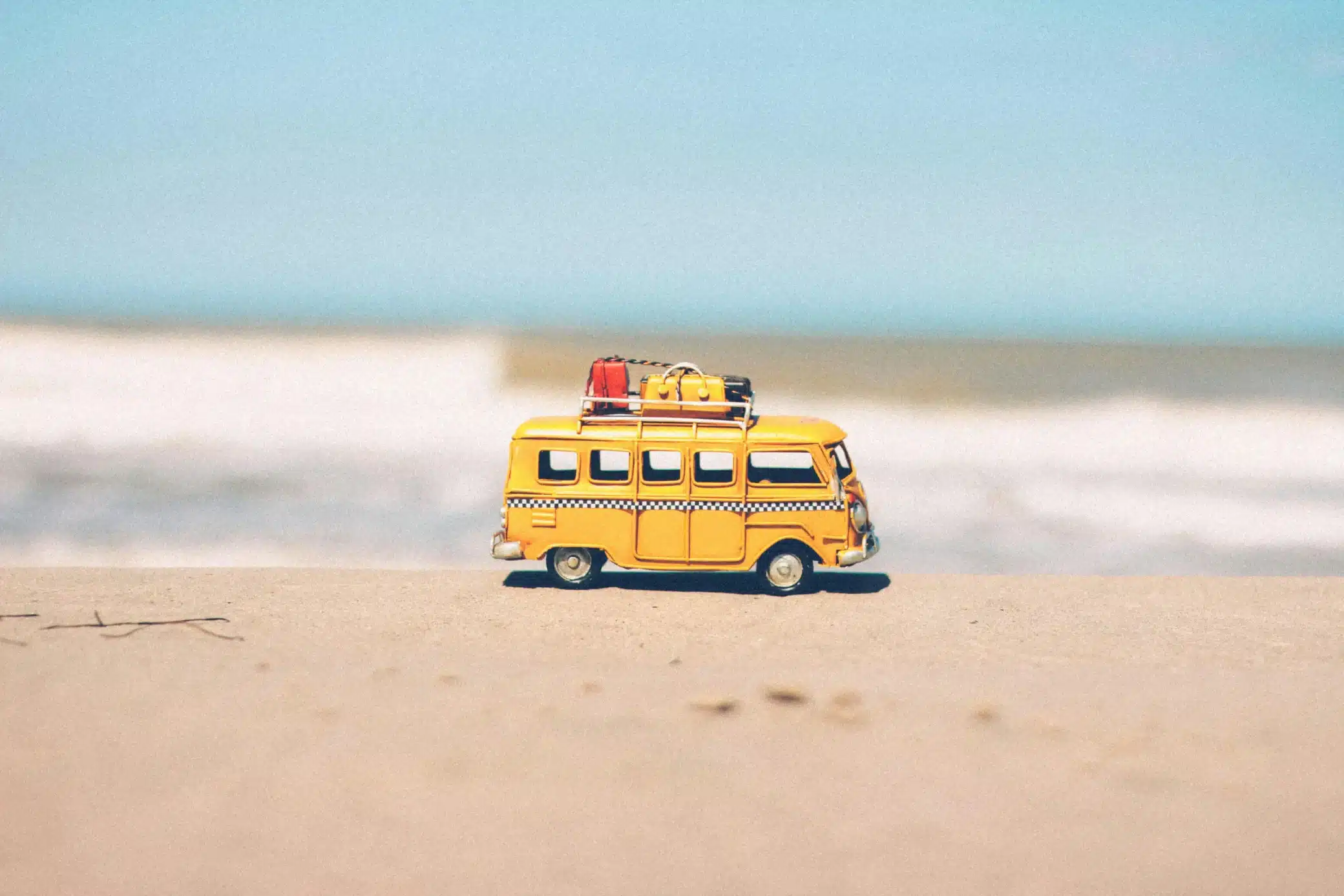
Table of Contents
Embark on a journey of discovery as you delve into the captivating world of Morocco Desert Tours. These immersive experiences offer a glimpse into the rich tapestry of culture, history, and natural beauty that define Morocco’s desert landscapes. Whether you’re drawn to the endless sea of dunes in the Sahara or the rugged terrain of the Atlas Mountains, Morocco’s deserts promise adventure and intrigue at every turn. From camel treks beneath star-studded skies to encounters with nomadic tribes, each moment on a desert tour is filled with wonder and possibility.
The Allure of Morocco’s Desert Landscapes:
Morocco’s desert landscapes hold a magnetic allure that has captivated travelers for centuries. The vast expanse of the Sahara Desert stretches out before you, its shifting sands painting a mesmerizing picture of endless horizons. In contrast, the rocky outcrops and lush oases of the Atlas Mountains provide a striking backdrop to the desert scenery. From the towering dunes of Erg Chebbi to the dramatic canyons of Todra Gorge, each landscape is a testament to the raw beauty and diversity of Morocco’s deserts.
Planning Your Morocco Desert Adventure:
Planning your Morocco desert adventure is an exciting endeavor filled with endless possibilities. Start by determining the duration of your trip and the type of experience you’re seeking, whether it’s a short excursion or an extended expedition into the heart of the desert. Consider factors such as the best time to visit, the level of physical activity involved, and any specific interests or preferences you may have. Research reputable tour operators and carefully review their itineraries to ensure they align with your goals and expectations. With proper planning and preparation, your Morocco desert adventure is sure to be an unforgettable experience.
Popular Destinations: From Marrakech to Merzouga:
Marrakech, with its vibrant souks and ancient medina, serves as the gateway to Morocco’s desert adventures. From here, travelers embark on journeys into the desert, with Merzouga emerging as one of the most popular destinations. Nestled on the edge of the Sahara Desert, Merzouga offers access to towering sand dunes, picturesque oases, and authentic Berber villages. Other notable destinations include the Dades Valley, known for its stunning rock formations, and the oasis town of Zagora, where palm-fringed landscapes beckon travelers to explore.
Activities and Experiences in Morocco’s Deserts:
Morocco’s deserts offer a plethora of activities and experiences to suit every traveler’s interests and preferences. Embark on a camel trek across the dunes, allowing you to immerse yourself in the timeless beauty of the desert landscape. Spend a night under the stars at a traditional Berber camp, where you’ll savor local cuisine and listen to stories by the campfire. For the more adventurous, try your hand at sandboarding down the dunes or embark on a 4×4 off-road adventure through the desert terrain. Cultural experiences abound, from visiting nomadic tribes to exploring ancient kasbahs and caravan routes. Whatever your desires, Morocco’s deserts promise an unforgettable array of activities and experiences for all who dare to venture into their midst.
Cultural Immersion: Meeting Nomadic Tribes and Local Communities:
Embark on Marrakech desert trips that offer unparalleled opportunities for cultural immersion, providing insights into the lives of nomadic tribes and local communities. Encounter the Berber people, the indigenous inhabitants of Morocco’s desert regions, known for their rich traditions and warm hospitality. Share a cup of mint tea with a Berber family in their tent, and gain firsthand knowledge of their nomadic lifestyle, ancient customs, and artisanal crafts. Participate in traditional ceremonies, such as music performances or bread-making sessions, to deepen your understanding of Berber culture and forge meaningful connections with local communities.
Choosing the Right Morocco Desert Tour Operator:
Selecting the right Morocco desert tour operator is essential for ensuring a seamless and enriching travel experience. Look for operators with a reputation for professionalism, safety, and sustainability. Read reviews from past travelers and seek recommendations from trusted sources to gauge the quality of their services. Consider factors such as the variety of tour options, the expertise of guides, and the inclusivity of cultural experiences offered. Opt for operators who prioritize responsible tourism practices and respect for local communities and the environment. By choosing wisely, you can embark on Marrakech desert trips that are not only enjoyable but also ethical and enriching.
Practical Tips for Your Desert Journey:
Prepare for your Marrakech desert trip with these practical tips to ensure a smooth and enjoyable experience. Pack lightweight, breathable clothing suitable for hot desert climates, along with sturdy hiking shoes and sun protection essentials like hats and sunscreen. Carry ample water and snacks to stay hydrated and energized during your excursions. Be mindful of cultural norms and dress modestly, especially when visiting local communities or religious sites. Keep important documents and valuables secure, and always inform someone of your itinerary before venturing into remote desert areas. With proper planning and preparation, you can make the most of your Marrakech desert adventure while staying safe and comfortable.
Safety Precautions in Morocco’s Desert Environment:
While exploring Morocco’s desert environment can be exhilarating, it’s essential to prioritize safety at all times. Be aware of potential hazards such as extreme temperatures, rugged terrain, and limited access to medical facilities in remote areas. Stay hydrated by drinking plenty of water and avoid prolonged exposure to the sun, especially during peak daylight hours. Follow the guidance of experienced guides and adhere to designated trails to minimize the risk of getting lost or encountering dangerous wildlife. Familiarize yourself with basic first aid techniques and carry a well-stocked emergency kit with essential supplies. By taking precautions and exercising caution, you can enjoy the beauty of Morocco’s deserts while minimizing potential risks.
Conclusion:
In conclusion, Marrakech desert trips offer an unforgettable blend of adventure, culture, and natural beauty, providing travelers with the opportunity to immerse themselves in Morocco’s desert landscapes and vibrant communities. Whether embarking on camel treks across the dunes, meeting nomadic tribes, or exploring ancient kasbahs, each moment is filled with discovery and wonder. By choosing reputable tour operators, practicing responsible tourism, and prioritizing safety, travelers can embark on desert journeys that leave a lasting impact while respecting the land and its inhabitants. With its timeless allure and boundless charm, Morocco’s deserts beckon adventurers from around the world to experience the magic of the Sahara firsthand.
Travel
Avoiding Scams: How to Identify the Best Timeshare Resale Companies
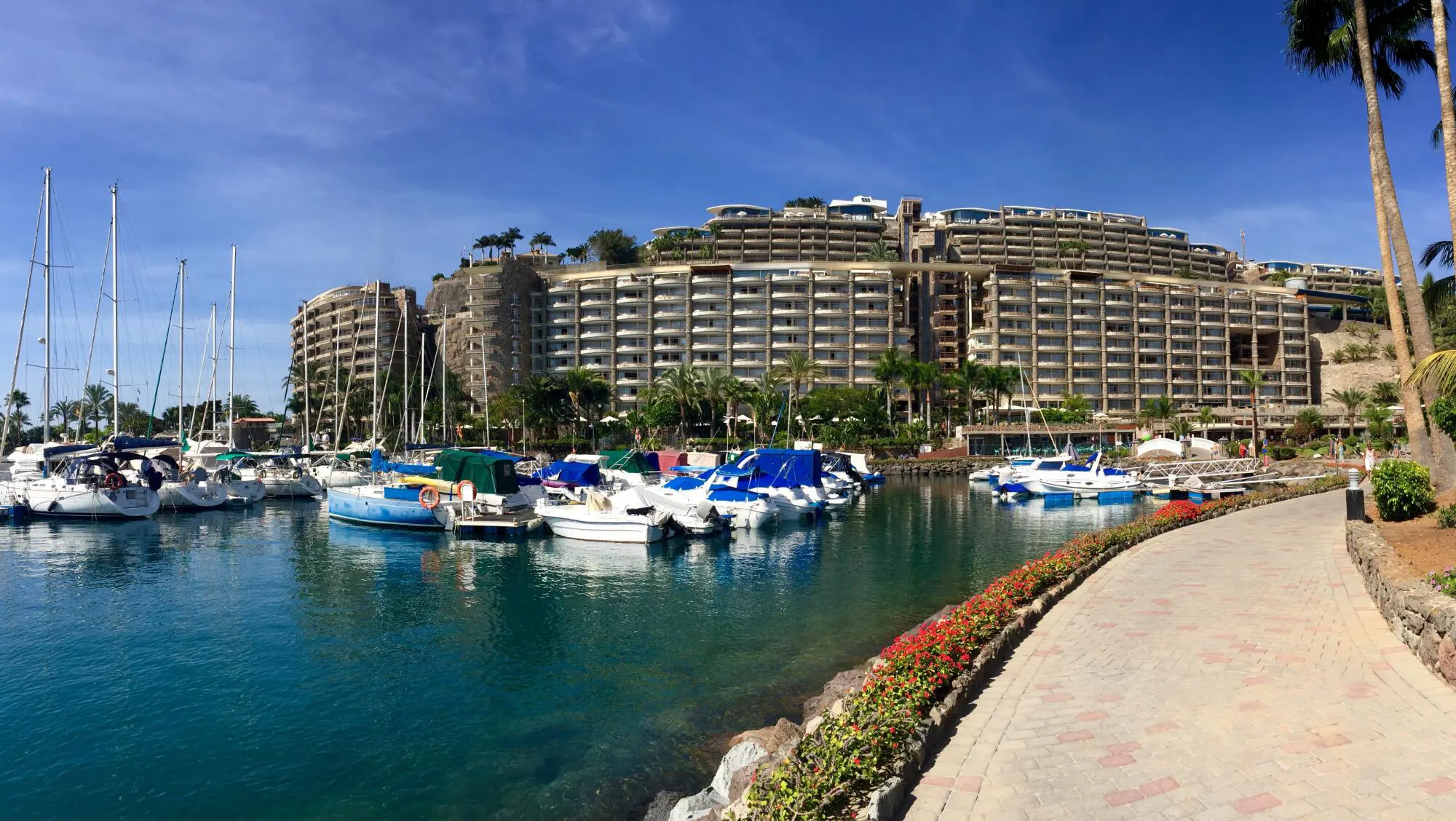
Table of Contents
Buying a timeshare can be an exciting investment. It offers the promise of beautiful annual getaways and a slice of luxury living.
However, for various reasons – from changing lifestyles to evolving financial situations – the need to sell a timeshare may eventually arise. This is where timeshare resale companies come into play.
In this comprehensive guide, we’ll explore crucial steps to identify the best timeshare resale companies. That way, you can be assured of a seamless and secure resale process.
Read on!
Research Company Reputation
When it comes to choosing a timeshare resale company, reputation is everything. Look for companies with positive reviews and ratings from previous clients. You can also check with the Better Business Bureau. See if there have been any complaints filed against the company.
Additionally, consider reaching out to friends or family who may have used a timeshare resale company in the past. Their personal experiences and recommendations can be invaluable in your decision-making process.
Verify Licensing and Accreditation
Trustworthy companies comply with licensing and accreditation requirements. This will help ensure that the company operates legally and follows industry standards.
In the United States, you can check with your state’s Department of Real Estate or Business Regulation for a list of licensed timeshare resale companies. Accreditation from organizations is also a good indicator of a reputable company.
Beware of Upfront Fees
One red flag to watch out for when choosing a timeshare resale company is upfront fees. Reputable companies typically only charge a commission or fee after the sale has been completed successfully. If a company asks for a large upfront payment, it may be a sign of potential fraud.
Moreover, be wary of companies that pressure you into buying additional services or upgrades. These are often unnecessary and can end up costing you more money in the long run. Take note that timeshare scams are prevalent, and it’s crucial to be cautious when dealing with any resale company.
Avoid High-Pressure Sales Tactics
Some timeshare resale companies may use high-pressure sales tactics to convince you to sell your timeshare quickly. This can include offering unrealistically high resale prices or creating a false sense of urgency. Be cautious of these tactics and take the time to research and compare offers from different companies.
Moreover, never feel pressured to decide on the spot. Take your time to carefully consider all options and choose a company that you are comfortable with.
Ask for Legal Documentation
When selling a timeshare, it is crucial to have all legal documentation in order. This includes the deed, title, and any relevant maintenance fee or tax documents. A reputable timeshare resale company should provide transparent and detailed information about the entire sale process.
Be sure to ask for copies of all legal documents and review them carefully before signing anything. If a company is hesitant or refuses to provide these documents, it may be a red flag. If you find timeshare resales at incredible discounts, you can always ask the company to show their financial statements and contract agreements.
Identify the Best Timeshare Resale Companies
In conclusion, choosing the best timeshare resale companies involves thorough research and careful consideration. By following these tips, you can ensure a smooth and secure resale process.
Don’t hesitate to reach out to trusted sources for recommendations and take your time in making a decision. With these steps in mind, you can confidently choose a reputable company to help you sell your timeshare.
-
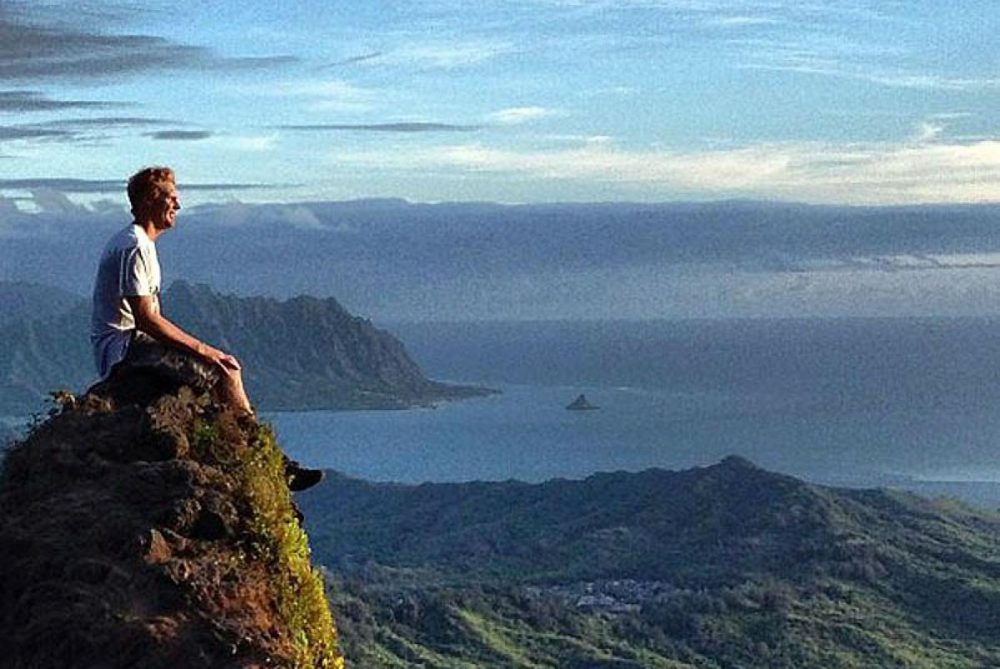
 Travel4 years ago
Travel4 years agoThe Family of Kirk Passmore Issues a Statement Regarding the Missing Surfer
-

 Technology4 months ago
Technology4 months agoManyroon: The Key to Unlocking Future-Proof Business Solutions
-

 Cryptocurrency1 year ago
Cryptocurrency1 year agoBest Tips For Cryptopronetwork com Contact 2024
-

 Technology3 years ago
Technology3 years agoPaturnpiketollbyplate Login & Account Complete Guide Paturnpike.com
-

 Business4 months ago
Business4 months agoCoyyn.com Gig Economy: Smart Contracts and Fair Payments for Freelancers
-

 Apps & Software2 years ago
Apps & Software2 years agoFapello 2023: Social Media Platform for NSFW Content
-

 Law3 years ago
Law3 years agoShould I Hire a Lawyer For My Elmiron Case?
-

 Business4 months ago
Business4 months agoAcumen: The Key to Smart Decision-Making and Success






